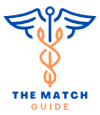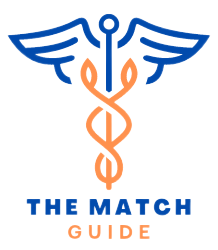A Complete A to Z Guide for ERAS Supplemental Application
A Complete A to Z Guide for ERAS Supplemental Application
The AAMC’s Supplemental ERAS Application is an optional application that medical students or graduates can submit to residency programs in certain specialties. These specialties include Dermatology, Neurological Surgery, Otolaryngology, Plastic Surgery, Urology, and Vascular Surgery. However, not all programs in these specialties require or use the supplemental application, so it’s important to check the specific requirements of each program and specialty to which you’re applying.
When should you complete the supplemental ERAS application?
The supplemental ERAS application can be completed any time between August 1st and September 16th. However, it’s important to keep in mind that you must register for an ERAS token by September 14th to receive an invitation to complete the application on time.
How to access and submit ERAS supplemental application?
The supplemental ERAS application process will be initiated when an applicant uses their token from their
Designated Dean’s Office to register for the 2023 ERAS season in the MyERAS application. All applicants
who have registered in the MyERAS application, regardless of the specialties to which they intend to
apply, will receive an invitation to complete the supplemental ERAS application. However, it is to be noted that completion of the supplemental ERAS application is optional and not all specialties participate in it.
- The AAMC usually start sending email invitations on Aug. 1, 2022. Applicants should expect to receive an email from the email address SuppERASApp@aamc.org.
- Applicants must register an ERAS token before 11:59 p.m. ET on Sept. 14 to receive an
invitation. If you have already registered and not received an invitataion, check your junk/spam folder and contact ERAS if there is no invitation sent to you. - The AAMC sends invitation emails daily (Monday through Friday) from Aug. 1 through Sept. 15
to applicants who have registered an ERAS token. - The AAMC will also send regular reminder emails between Aug. 8 and Sept. 15 or until you submit the
supplemental application. - The AAMC will send a confirmation email after you submit the supplemental application.
You do not need to complete the entire application in one sitting. You may save it and return to the point where you left off by using the personalized link in your invitation email. Do not share your personalized link to the supplemental application with others as they will have access to your personal information. - Your AAMC ID will appear at the top of the User
Agreement screen on the first page when you’ll open your supplementalapplication. You will need to verify that your AAMC ID is correct. If your AAMC ID is not correct, close out of the application immediately and email SuppERASApp@aamc.org with the following subject line: “Supplemental Application: Incorrect AAMC ID”. - You must submit your supplemental application by Sept. 16 at 5 p.m. ET. Select “Submit Application” on the last page of the supplemental application to submit the supplemental application. Be cery careful as you CANNOT make any changes to your supplemental application AFTER you have submitted it.
- Finally, when you apply to programs in MyERAS, your supplemental ERAS application data will be shared with the participating programs to which you apply as described in the subsequent sections. Your supplemental application will be released to programs at the same time as your main MyERAS application.
What are the questions on the supplementary ERAS application?
The supplemental ERAS application is divided into three sections: previous experiences (meaningful work), geographic information, and preference signaling. The previous experiences section allows you to identify up to 5 experiences that have been especially meaningful or impactful on your path to residency. You’ll provide basic information about each experience, such as your position title, the name of the organization, and the start and end dates of your involvement. Additionally, there are fields for clinical, research, and volunteer experiences that are unique to those types of experiences.
Past Experiences:
The past experiences section in the ERAS application is a crucial part of the residency application process. It allows applicants to communicate their most meaningful and other impactful experiences and the specific qualities they will bring to a residency program. It’s important for applicants to draft a complete list of experiences, reflect and identify experiences that communicate who they are, consider their meaningful experiences as a complete set, and share any other impactful experiences that have affected their journey to residency, if applicable.
Geographic Information:
In the section on geographic information, you can tell residency programs about the locations that appeal to you the most. This is particularly useful if you want to attend residency in a part of the country where you have no obvious ties, which may make it difficult for programs to choose you. You’ll be able to select up to three of the nine geographic regions that you’d like to do your residency in. You can also indicate that you don’t have a preference or that you don’t want to communicate one.
Preference Signaling:
The preference signaling section allows you to express your interest in specific residency programs. Although you will likely apply to several programs, you can send a signal of special interest to a select group of the programs that interest you the most. Depending on the specialty, you’ll be able to send a different number of signals. For example, in Dermatology, you can signal up to three programs, in Internal Medicine, up to seven, and in Orthopedic Surgery, up to thirty.
It’s worth noting that the supplemental ERAS application is still relatively new, and it’s not yet clear how programs will view applicants who choose not to complete it. However, it can be a useful tool for standing out to the programs that you’re most interested in and for providing more information about yourself. Additionally, the application is relatively brief, so it doesn’t require a significant time investment.
List of 16 participanting specialities:
• Adult Neurology
• Anesthesiology
• Dermatology
• Diagnostic Radiology and Interventional Radiology*
• Emergency Medicine (Program Signals only)
• General Surgery
• Internal Medicine (Categorical only)
• Internal Medicine/Psychiatry
• Neurological Surgery
• Obstetrics and Gynecology (Program Signals only)
• Orthopedic Surgery
• Pediatrics
• Physical Medicine and Rehabilitation
• Psychiatry
• Public Health and General Preventive Medicine
*These two specialities have collaboratively decided to combine the program signals.
Review an updated list of participanting specialities and relevant information here.
You can find a comprehensive list on individual residency programs participanting in ERAS supplemental application here.
Here is the timeline for ERAS supplemental application for MATCH 2023 cycle

In conclusion, it’s important to check the specific requirements of each program and specialty to which you’re applying before deciding whether or not to complete the supplemental ERAS application. If you do decide to complete it, it’s important to keep in mind that it can be completed any time between August 1st and September 16th, and that you must register for an ERAS token by September 14th to receive an invitation to complete the application on time. Additionally, it’s a good idea to be selective about the experiences that you include in the previous experiences section, to think carefully about the geographic regions that you’re interested in, and to be strategic about the programs that you signal your interest in.
- Cricket Run Rate
- Cricket Bating Tips
- Teen Patti Go
- Discover A World Of Possibilities With Gamdom India's Online Casino
- Teen Patti Joy
- Betln Exchange
- Betline Exchange
- Skyexchange.com Apk
- Sky Exchange App
- Tiger Exchange 247.com
- Hindi News Cricket
- Cricket News Today In Hindi
- Today Cricket News Hindi
- Hindi Cricket News
- Cricket In Hindi


